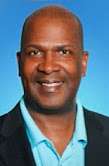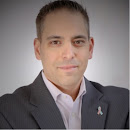For Immediate Release – July 19, 2025
Global Alliance Launches THE INSTITUTE FOR MEN'S CANCERS to Promote Advancements in Clinical Diagnostics and Care
[7/22/2025- New York, NY] – In an exclusive round-table conference between The Male Breast Cancer Global Alliance (MBCGA) and 6 executive members of the Integrative Cancer Resource Society (ICRS), a discussion about the topmost challenging CANCERS worldwide is the main topic addressed. This topic dovetailed to the formation of the Institute for Men’s Cancers—a cornerstone initiative of their newly established global consortium. This new assembly unites leading clinical experts, researchers, and advocacy foundations to advance education, diagnostic innovation, and treatment strategies for all men’s cancers, including but not limited to prostate, testicular, and male breast cancer. Together, MBCGA and ICRS are driving a collaborative movement to address critical gaps in awareness, research, and equitable access to care of RARE MEN'S CANCERS worldwide.The Institute is spearheaded by Dr. Lennard Goetze, President of F.A.C.E.S. (Firefighters Against Cancers and Exposures) and Executive Director of the ICRS. As a leading advocate for occupational and environmental cancer prevention,
Joining the development initiative is Dr. Robert Bard, internationally recognized cancer imaging specialist and founder of the AngioInstitute. Elected earlier this year as Chair of MBCGA’s Diagnostic Health Committee, Dr. Bard now serves as the Institute’s Clinical Director, leading efforts to integrate advanced imaging protocols and personalized care strategies. With over three decades of pioneering diagnostic innovations, Dr. Bard is dedicated to expanding training programs and supporting clinics in regions where access to cutting-edge technology and protocols remains limited.Mission Highlights
The initiatives of the Institute for Men's Cancers include:• Global Training Programs: Establishing diagnostic and screening centers in underserved regions to empower local healthcare providers.
• Collaborative Research & Advocacy: Working alongside MBCGA CEO Cheri Ambrose to raise awareness, collect data on unreported cases, and advance personalized treatment models.
• Integrative Partnerships: Engaging both conventional and alternative treatment communities to explore synergistic solutions for men’s cancers.
 • Policy & Outreach: Building relationships with national ambassadors, recruiting clinical advocates, and partnering with global health organizations to break through bureaucratic and political barriers.
• Policy & Outreach: Building relationships with national ambassadors, recruiting clinical advocates, and partnering with global health organizations to break through bureaucratic and political barriers.
“As a cancer institute, we believe advocacy and education must work hand-in-hand with research and patient care,” said Dr. Goetze. “This collaboration is about uniting diverse voices to pierce resistance and create a unified roadmap for global change.” Dr. Goetze brings his expertise in public health education to develop a comprehensive curriculum designed to map the current state of RARE male cancers and inspire actionable change.
| Men's rare cancers include: 1) Penile Cancer: fewer than 1 in 100,000 men)d South America. 2) Male Breast Cancer: 1% of all breast cancers 3) Rare Prostate Cancers: neuroendocrine, glandular, basal cell, transitional cell, and sarcomas 4) Cutaneous T-cell Lymphoma (CTCL): rare skin malignancy is more often diagnosed in men, with Mycosis Fungoides being the most common subtype. 5) Germ Cell Tumors of the testicle are relatively rare, though their incidence appears to be increasing. 6) Sebaceous Carcinoma: This rare cancer arises from skin appendages and is more common in older, white males. 7) Kaposi Sarcoma: seen in older men of Jewish/Mediterranean descent 8) Ocular Melanoma: While rare, ocular melanoma is slightly more common in men and can occur as a spot on the iris or a freckle in the back of the eye. 9) Thyroid Cancers (rare for men) - Anaplastic thyroid cancer - Medullary thyroid cancer - Squamous cell carcinoma - Teratomas - Oncocytic (Hürthle cell) considered rare and more aggressive |
A GLOBAL VOICE FOR MEDICAL CHANGE STARTS AT HOME
Through its far-reaching programs, the Institute aims to bring new visibility to men's cancers including those often-overlooked diseases —while serving as a catalyst for broader men’s cancer advocacy. By sharing critical data, enhancing statistics of care, and exploring solutions to improve outcomes, the Institute positions itself at the forefront of the next chapter in global cancer care.
4. Advocacy & Policy Taskforce
This taskforce will liaise with governments and international organizations to integrate RARE cancers into national cancer control plans.
This taskforce will liaise with governments and international organizations to integrate RARE cancers into national cancer control plans.
 | Public Voice, Global Reach “Dr. Mazza helps us amplify the message that bias and fear should never stop anyone from getting checked,” said Ambrose. “She bridges the gap between science and public understanding—and that’s the power we need to fight stigma and save lives.” (See complete feature on Dr. Mazza) |
| BUILDING A GLOBAL NETWORK FOR CHANGE |
“Together, we can bring transformative awareness, break cultural and systemic barriers, and ensure every man has access to the care he deserves—no matter where he lives,” added Dr. Bard. For more information about The Institute for Men's Cancers or to explore partnership opportunities, visit MBCScan.com or contact press@MBCGA.org.
Founding Charter of the Institute for Men's Cancers
An Initiative of the Male Breast Cancer Global Alliance
Introduction: A Global Response to an Overlooked Crisis
The Institute for Men's Cancers is established in part as a dedicated subchapter of the Male Breast Cancer Global Alliance (MBCGA). It serves as a center for education, innovation, and action in the fight against RARE men's cancers.As cancer remains needing of more support in screening and care in underserved areas worldwide, the Institute seeks to unify scientific research, diagnostic innovation, and public advocacy of men's cancers to join in a united initiative. It is designed to be an incubator of solutions—bringing together medical experts, policy leaders, educators, and patient advocates to reshape the narrative and response to men’s cancers worldwide. The Institute operates under a singular vision: to ensure equitable access to knowledge, diagnostics, and care for men's cancers everywhere.
“To advance global awareness, foster diagnostic innovation, and drive education and research initiatives that improve outcomes for male cancers and men’s health at large.” We envision a world where all cancer is recognized, diagnosed early, and treated with cutting-edge, compassionate care—regardless of geography or socioeconomic status. Meanwhile, because specific men's cancers remain underreported, the focus of this initiative is to bring new resources to address these so-called RARE cancers in men.
Our vision is to integrate clinical care, research, and education under a synergistic, multi disciplinary framework. We aim to:
1. Empower Healthcare Providers – Deliver standardized training in early detection, treatment innovations, and survivorship care to clinicians worldwide.
2. Drive Purposeful Research – Launch and support collaborative clinical trials, real world evidence collection, and translational studies that advance understanding and outcomes across the men’s cancer continuum.
3. Educate and Advocate – Develop curricula and public awareness campaigns that dismantle stigma, enhance health literacy, and encourage routine screening and proactive care in all communities.
Our Collaborative Mission
By fostering partnerships among medical institutions, advocacy organizations, community health centers, and global foundations, the Institute aims to:• Bridge Gaps in Access to diagnostics, therapies, and information in underserved regions.
• Leverage Multi Cancer Insights so innovations in one domain—such as immunotherapy or precision medicine—benefit others.
• Amplify Clinical Excellence by connecting oncology, urology, radiology, pathology, endocrinology, mental health, and patient support teams under one shared agenda.
The Institute for Men’s Cancers represents a dedicated consortium focused on transforming men’s cancer care from fragmented silos into a cohesive, data driven movement—empowering every man with equitable, research backed, state of the art treatment.
Core Objectives
1. Global Education & Training:
o Develop and deploy training programs for healthcare providers, ensuring diagnostic and treatment excellence in regions with limited resources.
o Establish a digital education hub offering certifications, webinars, and curriculum for medical professionals.
2. Diagnostic Innovation:
o Promote access to non-invasive and cost-effective diagnostic tools, such as high-resolution ultrasound and thermal imaging, as frontline screening methods.
o Conduct pilot programs to implement diagnostic centers in underserved communities.
3. Research & Data Collection:
o Build a global registry of men's RARE cancer cases to address underreporting and improve epidemiological understanding.
o Partner with academic institutions for studies on alternative therapies and integrative approaches.
4. Advocacy & Outreach:
o Engage with policymakers, national health ministries, and global health organizations to prioritize cancer in public health agendas.
o Launch campaigns aimed at reducing stigma and increasing awareness of men’s cancers.
5. Global Partnerships:
o Collaborate with hospitals, NGOs, and community health systems to create sustainable programs.
o Form strategic alliances with technology developers and pharmaceutical leaders to bring innovations to the field.
Key Programs and Initiatives
1. The IMC Global Training Network
A flagship program designed to train clinicians, radiologists, and health workers in cancer detection and management.
• On-site and virtual workshops
• Development of region-specific protocols
• Certification for community-based healthcare providers
2. The Diagnostic Innovation Lab
A research hub focusing on validating and deploying novel diagnostic technologies that are cost-effective and scalable for low-resource settings.
3. The Global Cancer Data Initiative
A global data collection and analytics platform to document cases, track outcomes, and support policy recommendations.
4. Advocacy & Policy Taskforce
This taskforce will liaise with governments and international organizations to integrate RARE cancers into national cancer control plans.
 |
| See PA bill upgrade for public Cancer Screening |
Outreach Strategy for Legislative Change
The Institute’s outreach model centers on inclusion, innovation, and impact.
• Community Engagement: Working with local leaders to adapt programs to cultural and regional needs.
• Media & Awareness Campaigns: Leveraging traditional and digital media to combat stigma and promote early detection.
• Partnership Development: Forming alliances with universities, NGOs, and private-sector innovators.
• Proposals for Local, State and National Partnerships: Forming a coalition with lawmakers to promote updates in current legal bills about how cancer care is mitigated, managed and conducted.
A key pillar of the IMC is its focus on health equity. In many regions, barriers such as lack of infrastructure, outdated protocols, and cultural stigma hinder cancer detection and care. The Institute’s initiatives prioritize these underserved populations by:
• Providing diagnostic equipment and training at no cost through partnerships.
• Launching mobile diagnostic units for rural areas.
• Offering telehealth consultations and second opinions from Institute experts.
Long-Term Impact Goals (2025–2030)
• Establish 50+ training centers across five continents.
• Reach 100,000 healthcare professionals through virtual education platforms.
• Build a global RARE male cancer patient registry to improve epidemiological accuracy.
• Influence policy change in at least 25 countries to include RARE male cancers in national screening guidelines.
Closing Statement
The Institute for Men's Cancers stands as a bold and transformative initiative—combining science, education, and compassion to create a future where no man faces breast cancer in silence or isolation. By breaking barriers and uniting global efforts, the Institute embodies the power of collaboration in tackling one of healthcare’s most overlooked challenges. “This is more than an institute. It’s a movement to redefine how the world sees, diagnoses, and treats male cancers including those that remain 'rare' simply due to lack of data.” – Dr. Lennard Goetze

































